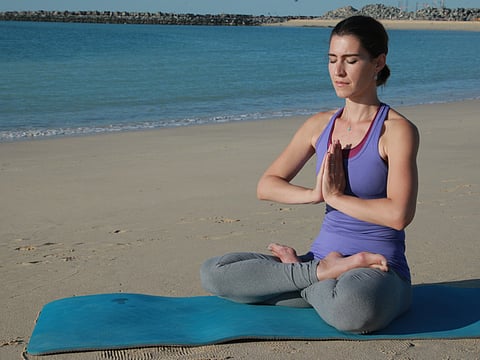Yoga: The practice of mudras
Bharat Thakur guides you through the practices of this ancient Indian discipline

The Sanskrit word mudra literally means seal. Mudras can be described as psychic, emotional, devotional and aesthetic gestures or attitudes. Mudras facilitate certain guided prana (life force or energy) flow in the body and by forming a specific mudra one can induce certain states of mind.
Mudras are introduced after some proficiency has been attained in asana (postures), pranayama (breath regulation) and bandha (neuromuscular locks). One needs awareness and sensitivity to get the full benefit of mudras. They need a certain amount of feeling to be effective. They are not a quick fix to a problem. Mudras are performed either in combination with or after asana and pranayama. Traditionally, mudras are passed on from a master to a disciple.
Benefit of mudras
According to yogic science, the human system is made up of five layers: annamaya kosha, or the physical body; manomaya kosha, or the mental body; pranamaya kosha, the pranic or energy body; vijnanamaya kosha, the subtle body; and anandamaya kosha, the bliss body. Working on one or more layers of the system affects the remaining layers. The practice of mudras helps establish a link between the physical, mental and energy body. Thus they can be used for physical and mental well-being.
Mudras can be used to prepare the mind for meditation. They also help sustain the flow of thoughts and increase receptivity of the mind to imbibe subtle levels of perception. It is at this stage that the mind assumes the quality of sakshi bhav, becoming a silent witness to mental activity. Each mudra sets up a different link and has a corresponding effect on the body, mind and prana. This helps the practitioner grow out of instinctive habitual patterns and establish a more refined consciousness.
Types of mudras
There are more than a hundred different forms of mudras. According to their physical denotations, they can be categorised into different types such as hasta or hand, mana or head, kaya or postural, bandha or lock, and adhara or perineal.
Hasta mudras redirect the prana being dissipated through the fingertips and palms back into the body.
Mana mudras use the eyes, ears, nose, tongue and lips. Some of them are also used as meditation techniques.
Kaya mudras utilise physical postures combined with breathing and concentration.
Bandha mudras combine mudra and bandha. They charge the system with prana and prepare it for deeper meditation.
Adhara mudras redirect prana from the lower chakras or energy centres to the brain.
Over the comings weeks, I will discuss a few mudras which can benefit a regular yoga practitioner.
Practice of the week
Anjali Mudra: Anjali is the Sanskrit word for offering. This mudra induces a sense of calm and tranquillity and prepares the mind for meditation when practised every day. It is also used in several postures.
Method
Sit in a comfortable meditative posture.
Keep the back straight and body relaxed.
Bring the palms together and press them firmly yet gently. Place the palms at the centre of the chest where the thumbs rest gently against the chest.
Close eyes, breathe deeply and slowly. Hold the mudra for 10-20 minutes.
Anjali mudra can be used in various postures, too.
Next week: Practice of mudras — Part 2
— This is an interactive series, in which we bring you practical tips on daily living, inspired by the vision of yoga. Write in to tabloid@gulfnews.com with your questions and doubts regarding enhancing your lifestyle through yoga. For more information, call 800-YOGA (9642) or log on to artisticyoga.com
Sign up for the Daily Briefing
Get the latest news and updates straight to your inbox



